What to do if Panasonic All in One Printer says 'During Reception: Add Toner'?
- MMary TorresAug 18, 2025
If your Panasonic All in One Printer displays 'During Reception: Add Toner', replace the Toner Bottle.
What to do if Panasonic All in One Printer says 'During Reception: Add Toner'?
If your Panasonic All in One Printer displays 'During Reception: Add Toner', replace the Toner Bottle.
What to do if my Panasonic All in One Printer says 'No Waste Toner Box'?
If your Panasonic All in One Printer displays 'No Waste Toner Box', install the Waste Toner Box.
How to troubleshoot no dial tone on Panasonic DP-3530 All in One Printer?
If there is no dial tone on your Panasonic All in One Printer, you should: 1. Check the connection of the telephone line. 2. Check the telephone line itself.
What to do if my Panasonic DP-3530 says 'During Reception: Add Paper'?
If your Panasonic All in One Printer displays 'During Reception: Add Paper', you need to replenish the recording paper.
How to fix document feed issues on Panasonic DP-3530 All in One Printer?
To resolve document feeding issues like documents not feeding or multiple feeds on your Panasonic All in One Printer: 1. Ensure your document is free of staples, paper clips, grease, and tears. 2. Verify your document is suitable for the ADF (Automatic Document Feeder) by checking the list of "Originals You Cannot Send." If unsuitable, use the Platen. 3. Confirm the document is loaded correctly.
Why Panasonic DP-3530 cannot transmit or receive?
If your Panasonic All in One Printer cannot transmit or receive, an information code will be shown on the display. Refer to the information code table to find out the trouble.
Why doesn't the recording paper advance into my Panasonic DP-3530 All in One Printer?
If the recording paper doesn't advance into your Panasonic All in One Printer, make sure that there is paper in the Paper Cassette and follow the instructions for loading paper.
What to do if recording paper doesn't eject from Panasonic DP-3530 All in One Printer?
If the recording paper doesn't eject after printing on your Panasonic All in One Printer, check to see if the recording paper is jammed inside of the machine.
How to troubleshoot no auto answer on Panasonic DP-3530 All in One Printer?
If your Panasonic All in One Printer does not auto answer: 1. Check the connection of the telephone line. 2. Check the Reception mode setting. 3. If the Fax Parameter No. 013 (AUTO JOURNAL PRINT) is set to "Valid" (default setting) and the machine is printing the received document(s) from memory, which also happens to be the 200th transaction, the machine will not auto answer until the Transaction Journal completes printing.
How to remove vertical lines on transmitted document from Panasonic DP-3530?
If you observe vertical lines on documents transmitted from your Panasonic All in One Printer, check your own copy quality. If the copy is OK, then your machine has no problem, report to the receiving party that they have a problem. If the copy shows the same issue, clean the Document Scanning Area.
Essential safety precautions and warnings for operating the machine.
Instructions for connecting telephone lines and LAN cables to the machine.
Explanation of the machine's control panel buttons, LEDs, and touch panel.
Procedures for loading documents into the ADF or onto the platen glass.
How to adjust settings like contrast and resolution before sending.
Step-by-step guide on how to send documents using various modes.
Details on memory and direct transmission options for sending faxes.
Information on automatic and manual fax reception modes.
How to change various operational modes for facsimile functions.
Setting up deferred transmission and polling for scheduled communications.
Procedures for polling documents from other stations and preparing to be polled.
Setting up keys for group dialing, program dial, and modifying entries.
Features for sending, receiving, and managing confidential fax documents.
Using sub-addressing for routing, forwarding, and relaying fax documents.
How to automatically attach a fax cover sheet to transmitted documents.
Setting and using passwords for transmission and reception security.
Securing received documents in memory with a password.
Configuring the machine to prompt for a PIN code before dialing.
Preventing reception of unwanted faxes by matching sender information.
Using department codes for tracking transmissions and sorting journals.
Managing stored communication files, including printing lists and editing entries.
Prerequisites and network configuration for using Internet Fax.
Overview of Internet Fax, email, and related communication features.
Key differences between Internet Fax and regular fax, plus network notes.
Setting user-specific parameters and essential Internet configuration.
Procedures for sending documents via email using manual or address book methods.
Options for receiving faxes and emails over the network.
Configuring program keys to retrieve emails from POP servers.
Customizing sender information for outgoing email transmissions.
Setting up rules for routing incoming faxes and emails to specific destinations.
Configuring the machine to automatically forward received faxes or emails.
Enabling automatic confirmation messages for received Internet Fax transmissions.
Methods for sending documents through relay stations to save costs and time.
Changing the machine's dialing method between Tone and Pulse.
How to adjust the monitor volume for dial tone and signals.
Setting basic machine parameters like logo, character ID, and time zone.
Adding, editing, and deleting contact information for speed dialing.
Overview of adjustable Fax Parameters for machine customization.
Details on printing and viewing transaction records of sent/received documents.
Viewing and understanding communication journal entries.
Printing the list of stored telephone numbers and email addresses.
Printing lists of programmed group dialing and program keys.
Printing the list of all configured fax parameters.
Common problems, symptoms, possible causes, and solutions.
Explanations of error codes displayed on the machine for troubleshooting.
Maintenance procedures for the verification stamp unit.
Steps to diagnose issues with the telephone line connection.
Technical specifications for G3 facsimile and Internet Fax features.
Important FCC compliance information and warnings for US users.
Regulatory and compliance information for users in Canada.
Definitions of technical terms and features used in the manual.
Reference image for facsimile transmission standards.
Alphabetical listing of topics and their corresponding page numbers.
Essential safety precautions and warnings for operating the machine.
Instructions for connecting telephone lines and LAN cables to the machine.
Explanation of the machine's control panel buttons, LEDs, and touch panel.
Procedures for loading documents into the ADF or onto the platen glass.
How to adjust settings like contrast and resolution before sending.
Step-by-step guide on how to send documents using various modes.
Details on memory and direct transmission options for sending faxes.
Information on automatic and manual fax reception modes.
How to change various operational modes for facsimile functions.
Setting up deferred transmission and polling for scheduled communications.
Procedures for polling documents from other stations and preparing to be polled.
Setting up keys for group dialing, program dial, and modifying entries.
Features for sending, receiving, and managing confidential fax documents.
Using sub-addressing for routing, forwarding, and relaying fax documents.
How to automatically attach a fax cover sheet to transmitted documents.
Setting and using passwords for transmission and reception security.
Securing received documents in memory with a password.
Configuring the machine to prompt for a PIN code before dialing.
Preventing reception of unwanted faxes by matching sender information.
Using department codes for tracking transmissions and sorting journals.
Managing stored communication files, including printing lists and editing entries.
Prerequisites and network configuration for using Internet Fax.
Overview of Internet Fax, email, and related communication features.
Key differences between Internet Fax and regular fax, plus network notes.
Setting user-specific parameters and essential Internet configuration.
Procedures for sending documents via email using manual or address book methods.
Options for receiving faxes and emails over the network.
Configuring program keys to retrieve emails from POP servers.
Customizing sender information for outgoing email transmissions.
Setting up rules for routing incoming faxes and emails to specific destinations.
Configuring the machine to automatically forward received faxes or emails.
Enabling automatic confirmation messages for received Internet Fax transmissions.
Methods for sending documents through relay stations to save costs and time.
Changing the machine's dialing method between Tone and Pulse.
How to adjust the monitor volume for dial tone and signals.
Setting basic machine parameters like logo, character ID, and time zone.
Adding, editing, and deleting contact information for speed dialing.
Overview of adjustable Fax Parameters for machine customization.
Details on printing and viewing transaction records of sent/received documents.
Viewing and understanding communication journal entries.
Printing the list of stored telephone numbers and email addresses.
Printing lists of programmed group dialing and program keys.
Printing the list of all configured fax parameters.
Common problems, symptoms, possible causes, and solutions.
Explanations of error codes displayed on the machine for troubleshooting.
Maintenance procedures for the verification stamp unit.
Steps to diagnose issues with the telephone line connection.
Technical specifications for G3 facsimile and Internet Fax features.
Important FCC compliance information and warnings for US users.
Regulatory and compliance information for users in Canada.
Definitions of technical terms and features used in the manual.
Reference image for facsimile transmission standards.
Alphabetical listing of topics and their corresponding page numbers.
| Screen shape | Flat |
|---|---|
| Response time | - ms |
| Display diagonal | 65 \ |
| Display brightness | - cd/m² |
| Display technology | OLED |
| Native aspect ratio | 16:9 |
| Display diagonal (metric) | 164 cm |
| Supported graphics resolutions | 3840 x 2160 |
| Motion interpolation technology | - |
| Tuner type | Analog & digital |
| Digital signal format system | DVB-C, DVB-S2, DVB-T, DVB-T2 |
| Annual energy consumption | 250 kWh |
| Sound modes | Ambience, Music, Standard |
| Number of speakers | 2 |
| Product color | Black |
| Panel mounting interface | 400 x 400 mm |
| Processor cores | 4 |
| Audio formats supported | AAC, FLAC, MP3, WAV, WMA |
| Image formats supported | JPG |
| Video formats supported | 3GPP, AVCHD, AVI, FLV, M4V, MKV, MP4, PS, TS, VOB, VRO, WMV |
| On Screen Display (OSD) languages | BUL, CRO, CZE, DAN, DEU, DUT, ENG, ESP, EST, FIN, FRE, GRE, HUN, ITA, LAT, LIT, MAC, NOR, POL, POR, RUM, RUS, SER, SLK, SLV, SWE, TUR |
| Number of OSD languages | 27 |
| Package depth | 255 mm |
| Package width | 1867 mm |
| Package height | 945 mm |
| Package weight | 41000 g |
| AC input voltage | 220 - 240 V |
| AC input frequency | 50 - 60 Hz |
| Power consumption (max) | 528 W |
| Power consumption (off) | 0.3 W |
| Power consumption (standby) | 0.5 W |
| Power consumption (typical) | 180 W |
| DVI-D ports quantity | 0 |
| Common interface (CI) | No |
| USB 2.0 ports quantity | USB 2.0 ports have a data transmission speed of 480 Mbps, and are backwards compatible with USB 1.1 ports. You can connect all kinds of peripheral devices to them. |
| Compatible memory cards | SD |
| Common interface Plus (CI+) version | 1.3 |
| USB 3.2 Gen 1 (3.1 Gen 1) Type-A ports quantity | 1 |
| Depth (with stand) | 275 mm |
|---|---|
| Height (with stand) | 889 mm |
| Weight (with stand) | 30000 g |
| Depth (without stand) | 48 mm |
| Width (without stand) | 1453 mm |
| Height (without stand) | 839 mm |
| Weight (without stand) | 23000 g |
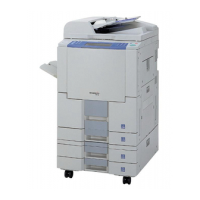
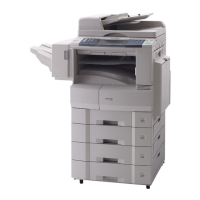
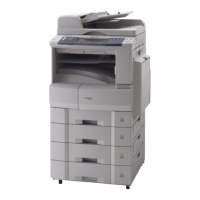

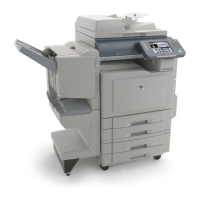

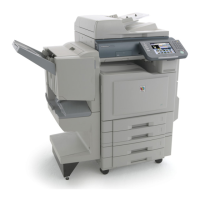

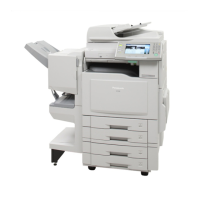
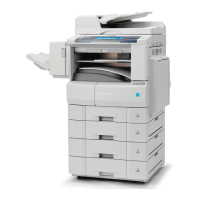
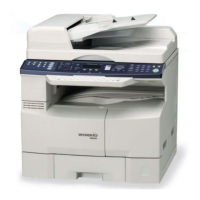
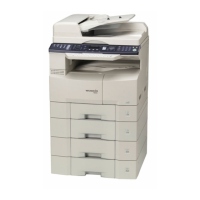
